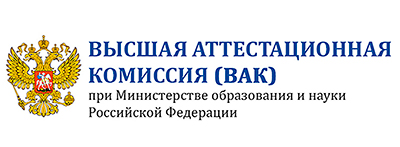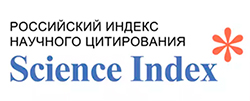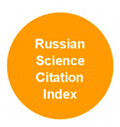Факторы роста ожидаемой продолжительности жизни: кластерный анализ по странам мира
Аннотация
Повышение ожидаемой продолжительности жизни до 80 лет к 2030 г. – одна из провозглашенных национальных целей развития страны. Для ее достижения важно понимать, какие факторы влияют на ожидаемую продолжительность жизни и могут быть, в свою очередь, объектами управляющего воздействия государства. В работе ставится цель выявить основные детерминанты продолжительности жизни населения в группах стран, различающихся уровнем продолжительности жизни, и показать место России в этом ряду. Для этого используются данные Всемирной организации здравоохранения и Всемирного банка по 82 странам мира, проводится дескриптивный, кластерный и корреляционный анализ. Проведенный анализ демонстрирует, что продолжительность жизни в России намного ниже, чем в странах с сопоставимым уровнем экономического развития и расходов на здравоохранение. Показано, что в зависимости от принадлежности стран к разным кластерам по уровню продолжительности жизни на здоровье населения влияют различные факторы и в неодинаковой мере: развитие экономики, в том числе здравоохранения, урбанизация, питание, нездоровый образ жизни. В заключение приводятся рекомендации для государственной политики.
Скачивания
Литература
Andreev E., Shkolnikov V. (2018). The relationship between mortality and economic development in Russia and its regions. Demographic Review, 1, 6-24. (In Russ.) Retrieved from: https://demreview.hse.ru/article/view/7707/8548
Anyanwu J., Erhijakpor A. (2009). Health expenditures and health outcomes in Africa. African Development Review, 21(2), 400–433. doi: 10.1111/j.1467-8268.2009.00215.x
Arrow K.J. (1963). Uncertainty and the welfare economics of medical care. The American Economic Review, 53(5), 941-973. Retrieved from: https://web.stanford.edu/~jay/health_class/Readings/Lecture01/arrow.pdf
Asiskovitch S. (2010). Gender and health outcomes: The impact of healthcare systems and their financing on life expectancies of women and men. Social Science & Medicine, 70, 886–895. doi: 10.1016/j.socscimed.2009.11.018
Barthold D., Nandi A., Mendoza Rodríguez J., Heymann J. (2014). Analyzing whether countries are equally efficient at improving longevity for men and women. American Journal of Public Health, 104(11), 9–2163. doi: 10.2105/AJPH.2013.301494
Bradley E.H., Sipsma H., Taylor L.A. (2017). American health care paradox—high spending on health care and poor health. QJM: An International Journal of Medicine, 1, 61–65. doi: 10.1093/qjmed/hcw187
Breyer F., Lorenz N., Niebel T. (2015). Health care expenditures and longevity: is there a Eubie Blake effect? The European Journal of Health Economics, 7(1), 95-112. doi: 10.1007/s10198-014-0564-x
Filmer, D., Pritchett, L. (1999). The impact of public spending on health: does money matter? Social Science & Medicine, 49, 1309–1323. URL: https://linkinghub.elsevier.com/retrieve/pii/S0277953699001501
Food and Agriculture Organization of the United Nations. Food Security Indicators. 2018. URL: http://www.fao.org/faostat/en/#data/FS
Gupta S., Verhoeven M., Tiongson E. (1999). Does higher government spending buy better results in education and health care? IMF, Working Paper. 99/21, Washington, DC. URL: https://papers.ssrn.com/sol3/papers.cfm?abstract_id=880548
Gupta S., Verhoeven M., Tiongson E. (2003). Public spending on health care and the poor. Health Economics, 12, 96–685. DOI: 10.12691/ajphr-3-3-4
Har'kova T., Nikitina S., Andreev E. (2017). Zavisimost' prodolzhitel'nosti zhizni ot urovnya obrazovaniya v Rossii. Voprosy statistiki, 8, 61-69. (In Russ.) Retrieved from https://voprstat.elpub.ru/jour/article/view/546/499
Heijink R., Koolman X., Westert G.P. (2013). Spending more money, saving more lives? The relationship between avoidable mortality and healthcare spending in 14 countries. European Journal of Health Economics, 14, 527–538. doi: 10.1007/s10198-012-0398-3
Heuvel, van den W., Olaroiu M. (2017). How important are health care expenditures for life expectancy? A comparative European analysis. Journal of the American Medical Directors Association, 18(3), 9–12. URL: https://www.jamda.com/article/S1525-8610(16)30559-X/pdf
International Labour Organization. Unemployment rate. 2018. URL: http://www.ilo.org/ilostat/faces/oracle/webcenter/portalapp/pagehierarchy/Page3.jspx?MBI_ID=2&_afrLoop=762032180537267&_afrWindowMode=0&_afrWindowId=rxohjg0u3_1#!%40%40%3F_adf.ctrl-state%3Drxohjg0u3_45
Ivanov V., Suvorov A. (2003). Problemy okhrany zdorov'ya naseleniya Rossii. Problemy prognozirovaniya, 3, 99-113. (In Russ.) Retrieved from https://ecfor.ru/publication/problemy-ohrany-zdorovya-naseleniya-rossii/
Jaba E., Balan C., Robu I. (2014). The relationship between life expectancy at birth and health expenditures estimated by a cross-country and time-series analysis. Procedia Economics and Finance, 15, 108–114. DOI 10.1016/S2212-5671(14)00454-7
Kossova Т., Kossova Е., Sheluntsova М. (2017). Vlijanie potreblenija alkogolja na smertnost’ i ozhidaemuju prodolzhitel’nost’ zhizni v regionah Rossii [Estimating the Impact of Alcohol Consumption on Mortality and Life Expectancy in Russian Regions]. Ekonomicheskaya Politika [Economic Policy], 12(1), 58–83. (In Russ.) DOI: 10.18288/1994-5124-2017-1-03
Martin S., Rice N., Smith P. (2008). Does health care spending improve health outcomes? Evidence from English programme budgeting data. Journal of Health Economics, 27, 826–842. DOI: 10.1016/j.jhealeco.2007.12.002
McCullough M. J., Leider J. P. (2017). Associations between county wealth, health and social services spending, and health outcomes. American Journal of Preventive Medicine, 53(5), 592–598. DOI: 10.1016/j.amepre.2017.05.005
Nixon J., Ulmann Ph. (2006). The relationship between health care expenditure and health outcomes. The European Journal of Health Economics, 7(1), 7-18. DOI: 10.1007/s10198-005-0336-8
OECD (2017). OECD, Health at a Glance 2017: OECD Indicators, OECD Publishing, Paris. URL: http://dx.doi.org/10.1787/health_glance-2017-en
Paavola J. (2017). Health impacts of climate change and health and social inequalities in the UK. Environmental Health, 16 (Suppl 1), 113, 61-68. DOI: 10.1186/s12940-017-0328-z
Romaniuk P., Szromek A. (2016). The evolution of the health system outcomes in Central and Eastern Europe and their association with social, economic and political factors: an analysis of 25 years of transition. BMC Health Services Research, 16(95), 1–12. doi: 10.1186/s12913-016-1344-3
Saunders M., Barr B., McHale P., Hamelmann C. (2017). Key policies for addressing the social determinants of health and health inequities. Copenhagen: WHO Regional Office for Europe (Health Evidence Network (HEN) synthesis report 52). URL: https://www.ncbi.nlm.nih.gov/books/NBK453566/
Shkolnikov V, Andreev E, Zhang Zh, Oeppen J, Vaupel J. (2011). Losses of expected lifetime in the United States and other developed countries: Methods and empirical analyses. Demography, 48(1), 211-239. DOI: 10.18288/1994-5124-2017-1-03
Taylor L.A., Tan A.X., Coyle C.E., Ndumele C., Rogan E., Canavan M., et al. (2016). Leveraging the social determinants of health: What works? PLoS ONE, 11(8), e0160217. doi: 10.1371/journal.pone.0160217
World Bank (2018). World Development Indicators, DataBank. URL: http://databank.worldbank.org/data/reports.aspx?source=wdi-database-archives-%28beta%29
World Health Organization (2014). Review of social determinants and the health divide in the WHO European Region: final report. WHO Regional Office for Europe. Copenhagen. Retrieved from: http://www.euro.who.int/__data/assets/pdf_file/0004/251878/Review-of-social-determinants-and-the-health-divide-in-the-WHO-European-Region-FINAL-REPORT.pdf
World Health Organization (2010). Global Status Report on Noncommunicable Diseases 2010. Description of the Global Burden of NCDs, their Risk Factors and Determinants. URL: https://www.who.int/nmh/publications/ncd_report2010/en/
World Health Organization (2018). Global Health Observatory Data Repository. URL: http://apps.who.int/gho/data/node.imr
























